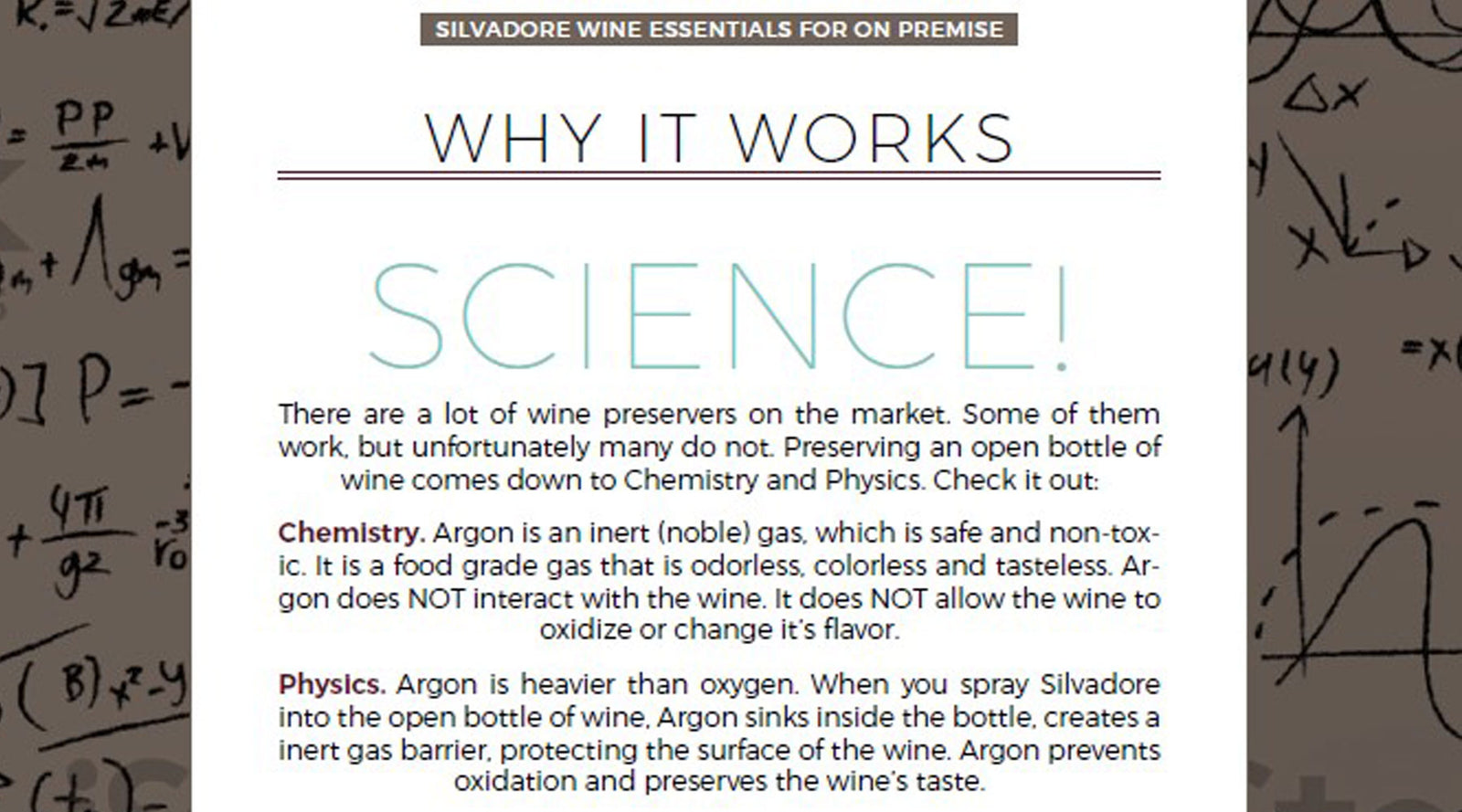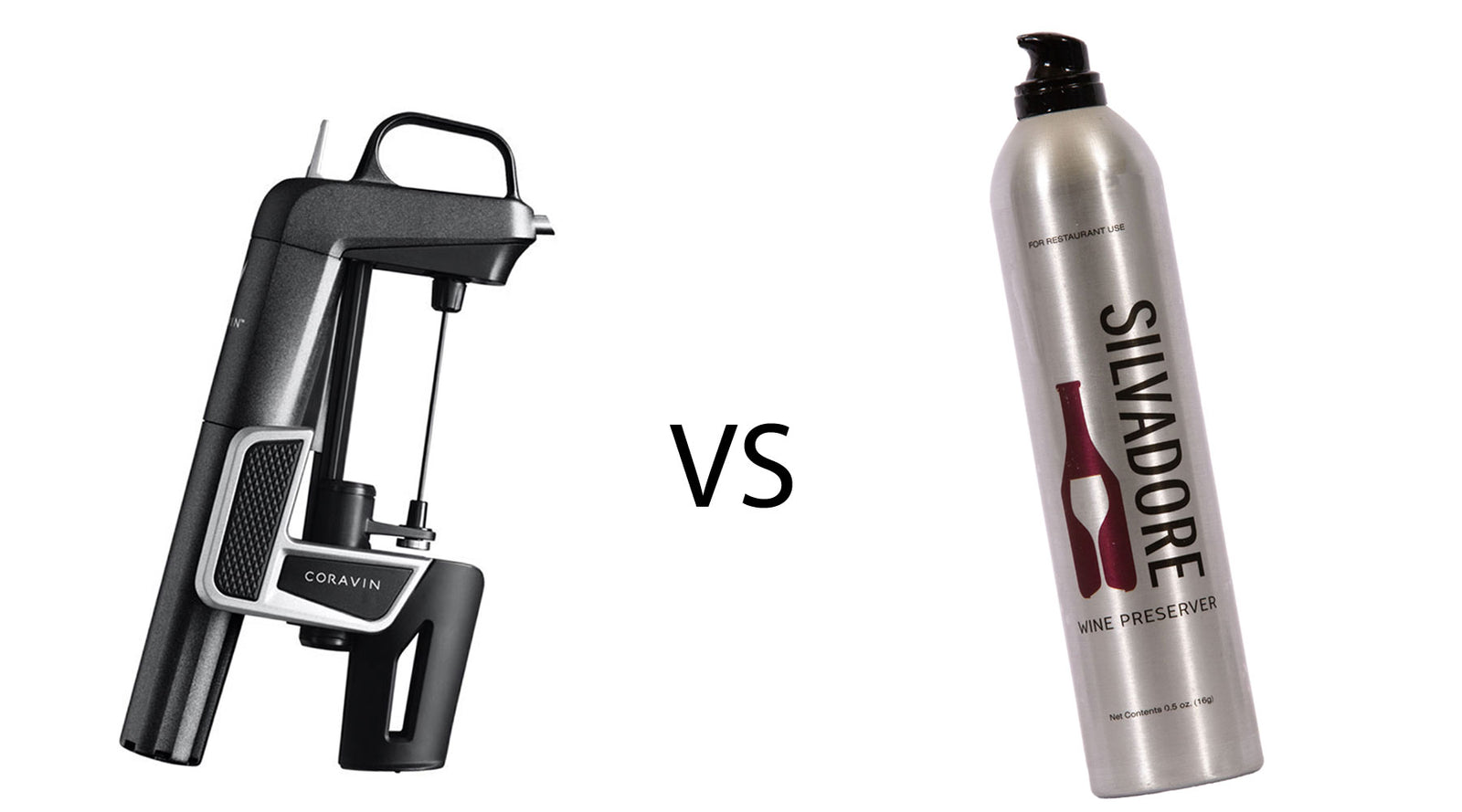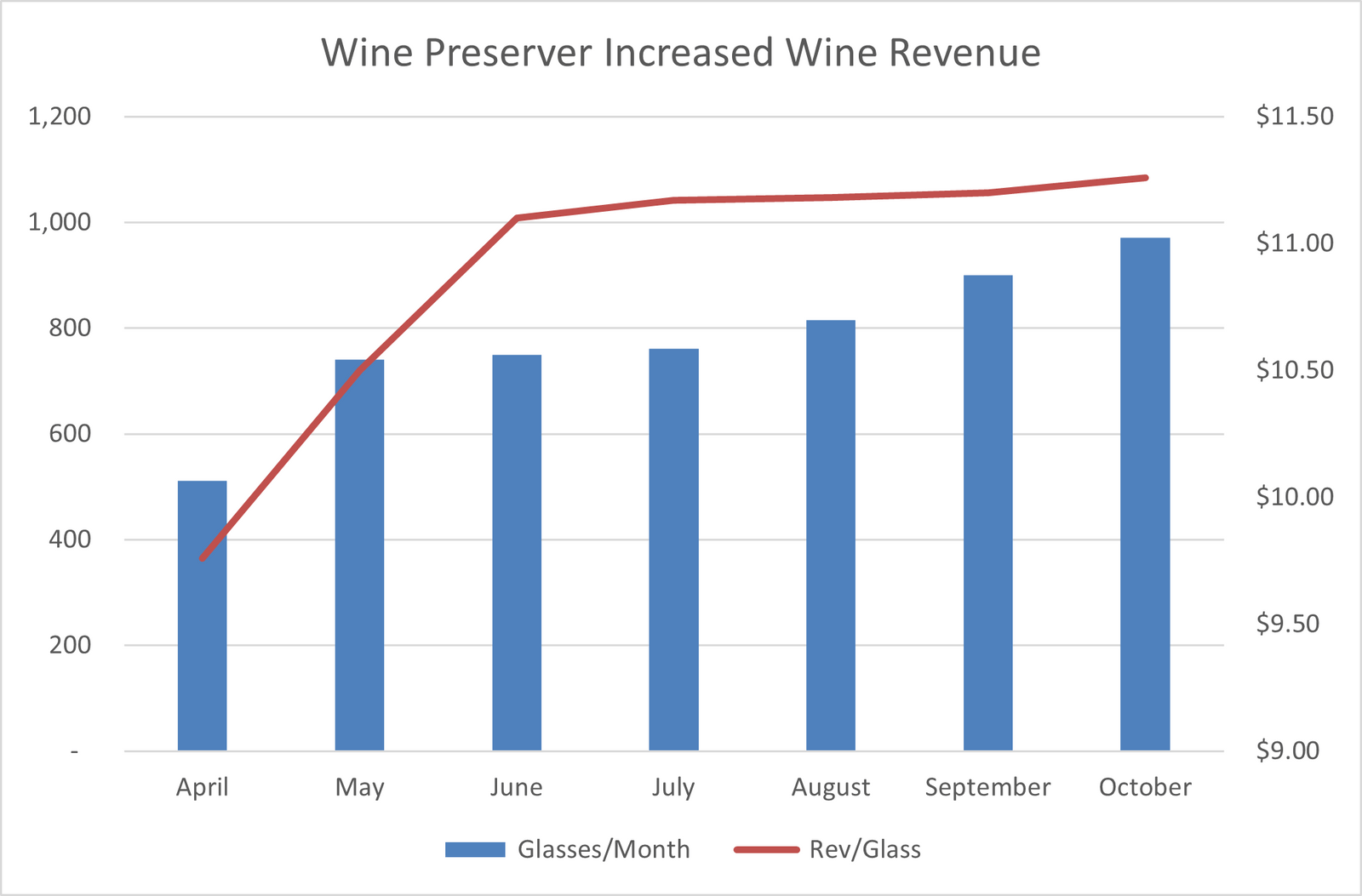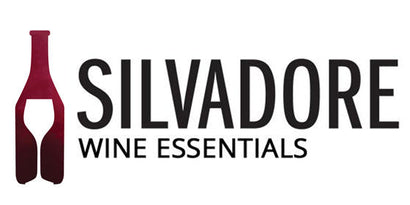Your Cart is Empty
get free shipping on orders over $50!
get free shipping on orders over $50!
Add description, images, menus and links to your mega menu
A column with no settings can be used as a spacer
Link to your collections, sales and even external links
Add up to five columns
Add description, images, menus and links to your mega menu
A column with no settings can be used as a spacer
Link to your collections, sales and even external links
Add up to five columns

Top Ways to Preserve Open Bottles of Wine - On Premise / Behind the Bar
Last Edited: October 05, 2021
There are a lot of wine preservation methods available for On Premise operators, and literally hundreds of wine accessories claiming to preserve wine. From over 15 years in the wine industry, including working with different wine preservers and preservation systems, we have a pretty strong base of experience on the subject. The bottom line is: some wine preservation methods work really wellfor On Premise use, some do a good job preserving wine but are difficult to use in fast paced operations, and some (many) simply don't work at all and risk wine waste and bad tasting pours.
The different wine preservation methods that you can use are subject to different perspectives and opinions. We believe the most important things to remember about wine preservers include:
- Wine flavor of an open bottle can be retained and the experience enhanced by using an effective wine preserver (see our article "Why Do Open Bottles of Wine Go Bad?")
- Wine preservers should be environmentally friendly, and with a low carbon footprint
- Wine preservation should be easy and cost effective (however it can be more expensive and glamorous). See our article "How Much Does it Cost to Preserve A Bottle of Wine in Your Business?"
- Using a wine preserver in your establishment enables different wine experiences, freeing you to market your wine program and grow wine revenue in new and fun ways
We've narrowed down the "Top Methods to Preserve and Open Bottle of Wine"below, as they represent the most common methods to preserve wine both at home and in restaurants, wine bars, tasting rooms, etc.
We describe the Top Wine Preservation Methods to allow you to make an informed decision. However, to best judge a wine preserver, we recommend you not only consider the information below, but trial wine preservation in your own operation. A fully operational trial requires no capital expense, and a very low cost canister to measure "before and after" wine revenue with only a few higher end bottles.
Regardless of what wine preservation method you prefer, the real importance of preservation is its ability to grow wine revenue in your business. By using a wine preserver, you can not only "save wine," it's a powerful tool to rethink how to sell, promote, upsell, and market wine-by-the-glass and merlot-to-go take home programs!
The Bottom Line: using an effective wine preserver can create better and more enjoyable wine experiences for you customers!
Summary: Top Methods to Preserve Wine On Premise

The Top Wine Preservation Methods Explained
The most common methods to preserve open bottles of wine include:- Pour the whole bottle. For very fast moving wines, most bottles you open will be poured quickly. No need to preserve these! But, what happens at the end of the night? Any open bottle sits oxidizing and loosing its fresh taste until the next pour. The only other alternative when presuming you'll "pour the whole bottle" is to pour the balance out before it goes bad. Here's the consumer take on "pour the whole bottle"....:-)

- Do Nothing. As it states, roll the dice and hope the taste stays relatively fresh until you pour another glass from the bottle. The cheapest and least complicated method, if you want to call not preserving wine at all a method! If you intend to pour the rest of the bottle later that evening or at most the next shift, and you're ok with some degradation in flavor, doing nothing is cheap and easy... But, doing nothing will inevitably result in your business severely limiting it's Wine by the Glass program, full bottle take home program, and therefore your potential for increasing wine revenue!!

- Refrigeration. This is a simple means to extend the shelf life of open bottles of wine, since lowering temperatures slows down oxidation. It's the main reason your customers don't as readily experience "wine gone bad" with open bottles of white wine. They might taste "something different", but not enough to be an issue. By refrigerating the bottle, oxidation slows. However, it does still occur and depending on the bottle, flavor changes can happen quickly. As with "do nothing" above, simple refrigeration will inevitably result in your business severely limiting it's Wine by the Glass program, and therefore potential for increasing wine revenue!!

- Vacuum. These systems use a suction method in an effort to extract all “air” out of an open wine bottle. The principle is that eliminating the air prevents oxygen from reacting with the surface of the wine. There are electric versions (like Bermar) and manual pumps (like VacuVin), that try to reduce the amount of oxygen in the bottle. Vacuum systems are generally inexpensive and are made by many different brands. A similar concept to vacuum is oxygen scavengers. Scavengers use a chemical reaction to reduce oxygen levels instead of attempting to create a vacuum. The issue with vacuum methods, though, is pretty simple - they aren't very effective. It is simply not possible to create a true vacuum inside the bottle, so the oxygen that remains oxidizes the wine. The "vacuum" reduces the amount of oxidization, but it still happens and affects the taste of the wine. You will likely notice the flavor change within 24-48 hours. This is a popular wine preservation method in restaurants, but it's effectiveness is severely limited. And, it requires a lot of time and energy to preserve multiple bottles at the end of the night. Fewer professionals are recommending it, instead favoring 100% argon solutions.
- Solid Separation. This approach relies on placing some form of solid separation barrier between the wine and the air in the bottle, thus preventing oxidation by keeping the wine and the air apart. Kind of goofy, difficult to implement with any precision, and uncertain and unreliable effectiveness. In a fast paced On Premise serving environment, these are generally a non-starter. Examples of this type are Air Cork (formally known as the Wine Balloon) and Wine Shield. Both try to place a solid barrier on top of the wine. The effectiveness breaks down when there are gaps in the surface coverage, allowing oxidization to continue. And, honestly, they're awkward and difficult to do at the end of the night, and require a barrier for every open bottle. Again - a non-starter for On Premise.

- Gas Barrier. This wine preservation method uses a gas to create an invisible barrier between the air and the surface of the wine. The gas (usually nitrogen or argon in closed systems or 100% argon in both closed and open systems) is inserted into the open bottle via a spray nozzle or needle. 100% argon is invisible, odorless, tasteless, and naturally occurring. Neutral gas barriers - and specifically 100% argon - are widely recognized as the most effective wine preservation method, with products being developed for both home and commercial use. In fact, 100% Argon is the preservation method of choice for most vineyards to keep their wine stable and tasting fresh. Argon solutions can be expensive or inexpensive, depending upon the device and delivery method. For wine preservation systems (like Napa Technologies), capital costs for the equipment for commercial units are $3,000 and up. For bottle top units (like Coravin), unit costs range from $200-$850. Both of these delivery methods require disposable cartridges containing the Argon to operate, as well as require sometimes significant routine maintenance in between pours or bottles. A more inexpensive and simpler method to deliver Argon is using a recyclable aluminum can - like Silvadore Wine Preserver. Gas canisters like Silvadore don't require any initial capital expense, and are much lower cost to use in both supplies AND critical labor.
What's the Best Method to Preserve Open Bottles of Wine?
The natural question after learning about all of these different methods is...what is the BEST WAY to preserve wine in my restaurant, bar, or tasting room?
We believe the best way to preserve an open bottle of wine is to use 100% Argon. Only 100% Argon creates an odorless, colorless, harmless protective layer between the surface of the wine and the air that causes oxidization.
There are at least 3 Different Types of Wine Preservers that use 100% Argon, and we can confidently recommend all three types to keep your open bottles of wine tasting fresh. Which one you chose depends on your budget, bar space, and interest in interacting with devices. And, of course, operating cost to use in fast paced environments.
Important points to consider certainly include cost and value. However the first priority is that the wine preserver actually works - its efficacy. Does the method actually preserve the fresh taste of the open bottle of wine? Highest efficacy is attained with 100% Argon gas.
After ensuring the method uses 100% Argon gas, then consider price/value considerations, business preferences, and ease of use for your staff. The increase in wine revenue that you can gain from using a wine preserver in your establishment quickly justifies the low time and effort required. (See our article "How Much it Costs to Preserve Bottles of Wine at Your Business")

The Bottom Line
From industry experience and the information above, we recommend 100% Argon as the most effective method to preserve open bottles of wine. Your decision then comes down to which delivery system makes the most sense for your business.
For several important reasons - including cost, ease of use, and ability to easily preserve multiple bottles at end of shift - we recommend 100% Argon in a recyclable aluminum can. This includes products like Silvadore Wine Preserver.
If you haven't tried using a wine preserver in your business, now is a great time to test it out for yourself. Order a can of Silvadore Wine Preserver and run a trial to prove the benefits for your customers and your wine revenue!
Shop for Silvadore Wine Preserver
Sign up for a wholesale account today, or purchase Silvadore from your wine distributor and/or foodservice distributor. With Wholesale pricing, online ordering, order history and order tracking, you're sourcing of Silvadore can be just as easy as preserving the bottles of wine behind your bar!
Got a question or want to talk to Sales? Contact us today.
Leave a comment
Comments will be approved before showing up.
Also in Better Wine Experiences for Businesses

Silvadore vs Coravin - Which is the Better Wine Preserver for Your Business?
March 11, 2024
We know 100% Argon is the best wine preservation method. Both Coravin and Silvadore use 100% Argon to preserve wine. So, which one is the better choice for you to use to preserve wine in your fast paced On Premise environment? Read on...
Read More
Revenue Increase from Selling More and Better Quality Wine On Premise
March 11, 2024
By using wine preservation, you'll be able to increase wine revenue. Wine preservation as a powerful tool to expand your wine by the glass program. Use wine preservation to increase full bottle wine sales. And a wine preserver is a great marketing and promotional tool. Here's how...

Silvadore Wine Preserver on the Cork&Taylor Podcast
March 11, 2024
Gary had the chance to appear on Luke Taylor's Cork&Taylor podcast. Listen to their conversation about Silvadore, VineyardFresh, and wine preservation in general.
Silvadore - A Better Wine Experience
Consumers buy and enjoy better tasting wine. Wine businesses sell more and better quality wine. Silvadore enables both to serve and enjoy A Better Wine Experience.


